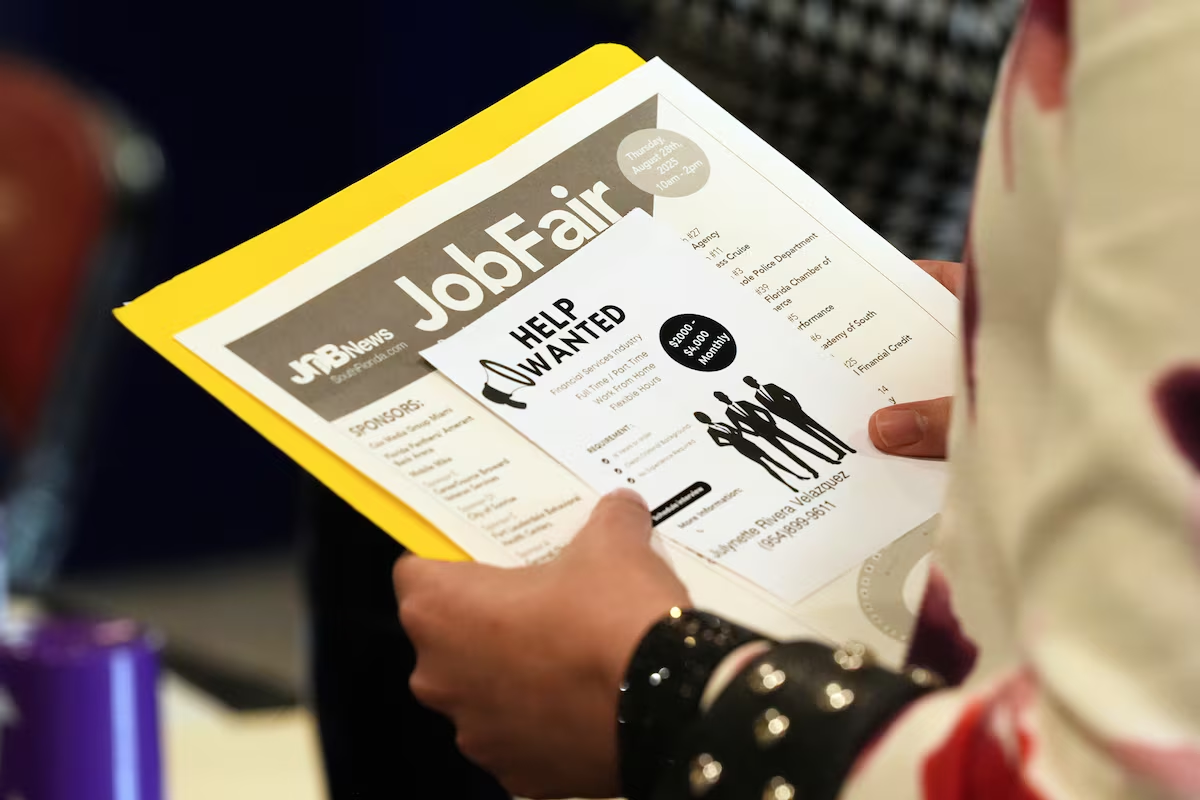U.S. job growth beats expectations in September; unemployment rate rises to 4.4%

Open this photo in gallery:
A job seeker waits to speak with a recruiter at a job fair in Sunrise, Fla., in August. A Reuters poll finds U.S. non-farm payrolls likely increased by 50,000 jobs in September.Marta Lavandier/The Associated Press
U.S. job growth accelerated in September, but the unemployment rate increased to a four-year high of 4.4 per cent and the economy in August shed jobs for the second time this year as employers navigate an uncertain environment.
The increase in the jobless rate to the highest level since October, 2021, reported by the Labor Department in its closely watched employment report on Thursday was from 4.3 per cent in August and reflected more people entering the labour market in search of work. Other data from the Labor Department showed layoffs remained low in mid-November, suggesting the labour market remained in a holding pattern.
“The combined jobs market data this morning does not point to a rapid deterioration of labour market conditions and affirms a modest growth path in the economy and employment,” said Joseph Brusuelas, chief economist at RSM US. “Today’s economic data will feed into the recent monetary policy narrative that the rate cut is neither prudent nor necessary,” when the Federal Reserve next meets in December.
Nonfarm payrolls increased by 119,000 jobs after a downwardly revised 4,000 drop in August, the Labor Department’s Bureau of Labor Statistics said. Economists polled by Reuters had forecast 50,000 jobs would be added after a previously reported 22,000 gain in August.
U.S. trade deficit drops 24% in August as Trump’s tariffs reduce imports
The report was initially due on Oct. 3, but was delayed by the 43-day shutdown of the government. The longest shutdown in history has forced the BLS to cancel the release of October’s report as no data was collected for the household survey to calculate the unemployment rate for that month. October nonfarm payrolls will instead be combined with November’s employment report now due on Dec. 16, the BLS said.
The healthcare sector continued to lead employment growth, adding 43,000 jobs in September, which were in ambulatory services and at hospitals. Employment at restaurants and bars increased 37,000, while social assistance payrolls advanced by 14,000. The transportation and warehousing industry lost 25,000 jobs.
Federal government payrolls decreased by another 3,000 jobs, bringing the total losses since January to 97,000. That number is expected to surge as tens of thousands of workers who took buyouts fell off government payrolls at the end of September.
The labour market has lost significant momentum this year as evidenced by sharp downward revisions to nonfarm payroll counts. Economists and policymakers blame the slowdown on reduced supply and demand for workers.
Heading into the economic data blackout, the BLS had estimated that about 911,000 fewer jobs were created in the 12 months through March than previously reported. A reduction in immigration that started during the final year of former President Joe Biden’s term and accelerated under President Donald Trump’s administration has depleted labour supply.
Economists estimate the economy now only needs to create between 30,000 and 50,000 jobs per month to keep up with growth in the working-age population, down from about 150,000 in 2024. About 470,000 people entered the labour force in September, but household employment only increased by 251,000 that month.
U.S. stocks opened higher. The U.S. dollar was little changed against a basket of currencies. U.S. Treasury yields fell.
Some economists believed the September employment report could still influence the Federal Reserve’s Dec. 9-10 policy meeting. U.S. central bank officials will not have November’s report in hand at that meeting as the release date has been pushed to Dec. 16 from Dec. 5. Minutes of the Fed’s October 28-29 meeting published Wednesday showed many policymakers cautioned that lowering borrowing costs further could risk undermining the fight to quell inflation.
The rising popularity of artificial intelligence is also eroding demand for labour, with most of the hit landing on entry-level positions, and locking recent college graduates out of work. Economists said AI was fueling jobless economic growth.
Others blamed the Trump administration’s trade policy for creating an uncertain economic environment that had hamstrung the ability of businesses, especially small enterprises, to hire. The U.S. Supreme Court early this month heard arguments on the legality of Trump’s import duties, with justices raising doubts about his authority to impose tariffs under the 1977 International Emergency Economic Powers Act.





